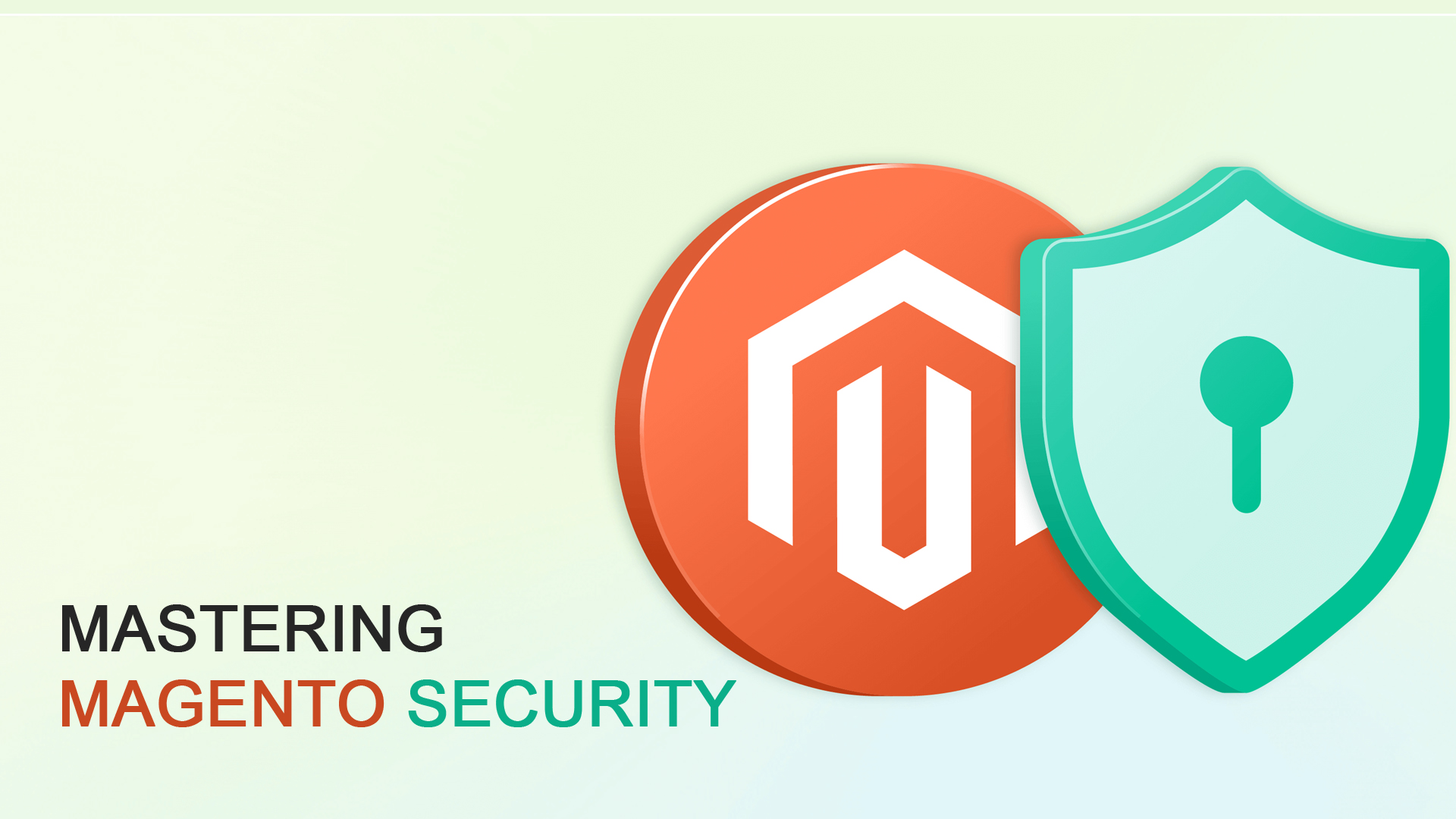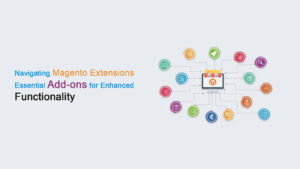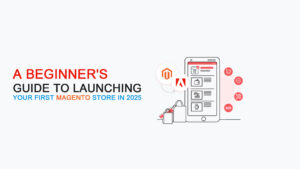The digital storefront of today’s e-commerce business is a bustling hub of transactions, customer data, and sensitive information. For Magento store owners, especially in a rapidly digitizing economy like India, the stakes for security have never been higher. In a landscape where cyber threats are constantly evolving and data privacy regulations are becoming stricter (such as India’s Digital Personal Data Protection Act, 2023, and its impending Rules, 2025), mastering Magento security is not just a technical task – it’s a fundamental business imperative.
Protecting your store and customer data from breaches, malware, and unauthorized access is crucial for maintaining trust, ensuring business continuity, and avoiding hefty penalties. This guide will walk you through the essential strategies and best practices for fortifying your Magento store against the threatening cybersecurity landscape of 2025.
The Evolving Threat Landscape for E-commerce in India
Indian e-commerce businesses face a unique set of challenges. While the digital adoption rate is soaring, so too is the sophistication of cybercriminals. Here are some prevalent threats:
- Phishing and Social Engineering: Attackers masquerade as trusted entities to trick employees or customers into revealing sensitive information.
- Ransomware: This malware locks down your data or systems, demanding a ransom for their release, often coupled with threats of public data leaks.
- SQL Injection (SQLi) & Cross-Site Scripting (XSS): These remain common web application vulnerabilities that allow attackers to inject malicious code, steal data, or hijack user sessions.
- DDoS Attacks: Distributed Denial-of-Service attacks flood your website with traffic, making it inaccessible to legitimate customers and potentially leading to significant revenue loss.
- Supply Chain Attacks: Vulnerabilities can be introduced through third-party extensions or integrations if not properly vetted, compromising your entire store.
- Credential Stuffing: Automated attacks that use leaked username/password combinations from other breaches to gain unauthorized access to your Magento admin or customer accounts.
- AI-Powered Attacks: Cybercriminals are increasingly leveraging AI to automate and scale attacks, identify vulnerabilities faster, and create more convincing phishing attempts.
Beyond these technical threats, the Digital Personal Data Protection Act (DPDPA), 2023, and its upcoming Rules in 2025 in India, mandate stricter data protection measures. Businesses must ensure consent-based data processing, implement “reasonable security safeguards,” notify data breaches within 72 hours to the Data Protection Board, and potentially face significant penalties for non-compliance. Similarly, adhering to PCI DSS (Payment Card Industry Data Security Standard) is non-negotiable for any store handling credit card data, irrespective of its location.
Foundational Pillars of Magento Security
A strong Magento security posture rests on several interconnected pillars:
1. Always Stay Updated: The Golden Rule
This cannot be stressed enough. Running an outdated Magento version or outdated extensions is the single biggest security risk.
- Magento/Adobe Commerce Updates: Adobe regularly releases security patches and new versions that address known vulnerabilities. Subscribe to the Adobe Security Notification Service and check the Magento Security Bulletin regularly. Apply these patches immediately upon release.
- Extension Updates: Just like the core platform, third-party extensions must be kept updated. Outdated or unpatched extensions are a common entry point for attackers.
2. Secure Your Admin Panel: The Gateway to Your Store
The Magento Admin panel is the most critical access point to your store. Protecting it is paramount.
- Change Default Admin URL: The default
/adminURL is a well-known target for bots. Change it to a unique, unpredictable URL (e.g.,yourstore.com/your-secret-admin-path). - Strong, Unique Passwords: Enforce complex passwords for all admin users – a mix of uppercase, lowercase, numbers, and special characters. Never reuse passwords across different accounts.
- Two-Factor Authentication (2FA): Enable 2FA for ALL admin accounts. Magento (both Open Source and Adobe Commerce) offers built-in 2FA using Google Authenticator or similar apps, adding an essential layer of security.
- Limit Login Attempts: Configure your Magento admin to lock out users after a certain number of failed login attempts to prevent brute-force attacks.
- IP Whitelisting: Restrict admin access to a predefined list of trusted IP addresses. If you have a static IP, this is highly effective.
- reCAPTCHA: Implement Google reCAPTCHA on your admin login page to prevent automated bot attacks.
- Remove Unused Admin Accounts: Regularly audit and remove any inactive or unnecessary admin accounts.
3. Secure Hosting Environment: Your Foundation
Your choice of hosting provider significantly impacts your store’s security.
- Managed Magento Hosting: Opt for a reputable hosting provider specializing in Magento (or Adobe Commerce Cloud for enterprise users). They offer optimized environments, server hardening, regular backups, and often include Web Application Firewalls (WAFs) and DDoS protection.
- Dedicated Resources: Avoid shared hosting for production Magento stores. Dedicated or cloud-based environments provide better isolation and control.
- Firewall (WAF): Implement a Web Application Firewall to filter and monitor HTTP traffic between your web application and the internet, blocking malicious requests (like SQLi or XSS attempts) before they reach your server.
- DDoS Protection: Ensure your hosting provider offers robust DDoS mitigation to prevent your site from being taken offline.
- Regular Backups: Implement an automated, frequent backup strategy for both your Magento files and database. Store backups off-site and test the restoration process regularly.
4. Data Encryption & PCI DSS Compliance: Protecting Sensitive Information
Protecting customer payment data is legally and ethically crucial.
- SSL/HTTPS: Implement and maintain an SSL certificate for your entire website. HTTPS encrypts all communication between the customer’s browser and your server, protecting sensitive data like login credentials and payment information. This is a fundamental PCI DSS requirement.
- PCI DSS Compliance: If you handle credit card data, you must be PCI DSS compliant. Magento aids in this by supporting secure payment gateways that tokenise or directly pass credit card data to the payment processor, ensuring sensitive card details never touch your server. Work with your payment gateway provider and a Qualified Security Assessor (QSA) to ensure full compliance.
- Tokenization/Vaulting: Use payment methods that rely on tokenization, where actual credit card numbers are replaced with a unique token. If you offer card vaulting (saving cards for future purchases), ensure the actual card data is stored securely by a PCI-compliant payment gateway, not on your Magento server.
- Data Protection Laws (India – DPDPA): Be aware of the requirements of India’s DPDPA 2023. This includes obtaining explicit consent for data processing, providing data principals with rights (access, correction, erasure), having clear privacy policies, and implementing “reasonable security safeguards” including encryption and access controls.
5. Code Quality & Extension Management: Beyond the Core
Your Magento store is often extended by third-party modules. These can be a source of vulnerabilities if not managed correctly.
- Vetted Extensions: Only download extensions from the official Magento Marketplace or highly reputable developers. Check reviews, support policies, and security updates history.
- Code Audits: Before installing new extensions, especially for critical functionalities, consider a code audit by a Magento security expert.
- Limit Extensions: Install only necessary extensions. Too many can increase the attack surface and potential for conflicts or vulnerabilities.
- Secure File Permissions: Set appropriate file and directory permissions (e.g., 644 for files, 755 for directories, and avoid 777) to prevent unauthorized access or execution of malicious code.
- Remove Unused Code: Disable or remove any unused themes, extensions, or modules to reduce potential attack vectors.
6. Regular Security Audits & Monitoring: Proactive Defense
Security is an ongoing process, not a one-time setup.
- Magento Security Scan Tool: Use Adobe’s free Security Scan Tool (available for both Magento Open Source and Adobe Commerce) to regularly scan your site for known vulnerabilities, malware, and unauthorized access.
- Vulnerability Scans & Penetration Testing: Conduct regular vulnerability scans (e.g., using OWASP ZAP, Nessus) and periodic penetration testing. These simulated attacks help identify weaknesses before malicious actors do.
- Log Monitoring: Implement robust log monitoring for both your Magento application and server. Look for suspicious activities like repeated failed login attempts, unusual file modifications, or abnormal traffic patterns. Tools like intrusion detection systems (IDS) can automate this.
- File Integrity Monitoring: Monitor critical Magento files for any unauthorized changes. This can quickly alert you to a compromise.
- Content Security Policy (CSP): Implement a strict CSP to prevent Cross-Site Scripting (XSS) and other code injection attacks by whitelisting trusted sources of content.
7. Employee Training & Awareness: The Human Firewall
Your team members are your first line of defense.
- Security Awareness Training: Regularly train all employees, especially those with admin access, on cybersecurity best practices.
- Phishing Recognition: Educate staff on how to identify and report phishing emails, suspicious links, and social engineering tactics.
- Strong Password Policies: Reinforce the importance of strong, unique passwords and the use of password managers.
- Least Privilege Principle: Grant users only the minimum necessary permissions required for their roles. Regularly review and adjust user roles and access levels.
A Magento Security Checklist for Indian Businesses in 2025
To summarise, here’s a quick checklist to help Indian Magento merchants fortify their stores:
- Platform & Patches:
- Are you on the latest Magento Open Source or Adobe Commerce version?
- Have all critical security patches been applied promptly?
- Do you subscribe to Adobe Security Notifications?
- Admin Panel:
- Is your admin URL custom and hard to guess?
- Is 2FA enabled for all admin users?
- Are strong, unique passwords enforced for admin accounts?
- Is reCAPTCHA enabled on the admin login?
- Is IP whitelisting used for admin access?
- Are unused admin accounts removed?
- Hosting & Infrastructure:
- Are you using a reputable, secure Magento-optimized hosting provider?
- Is a WAF and DDoS protection in place?
- Are daily backups performed and stored off-site? Is restoration tested?
- Are server access credentials secured (e.g., SFTP with keys)?
- Data & Compliance:
- Is an SSL certificate installed and valid for your entire site?
- Are you PCI DSS compliant? Is sensitive card data not stored on your server?
- Are you compliant with India’s DPDPA (consent, clear privacy policy, breach notification plan)?
- Is data encrypted at rest and in transit?
- Extensions & Code:
- Are all extensions updated?
- Are extensions only from trusted sources (Magento Marketplace, reputable developers)?
- Are file and directory permissions correctly set?
- Are unused themes/extensions disabled/removed?
- Monitoring & Audits:
- Do you use Adobe’s Security Scan Tool regularly?
- Are logs monitored for suspicious activity?
- Are regular vulnerability scans and penetration tests performed?
- Is file integrity monitoring implemented?
- Human Element:
- Are all employees trained in cybersecurity best practices?
- Is the “least privilege” principle applied to user roles?
Conclusion
In the dynamic and often challenging digital landscape of 2025, mastering Magento security is a continuous journey. It requires a proactive mindset, regular vigilance, and a commitment to implementing robust security practices. By focusing on platform updates, securing your admin panel, choosing a strong hosting environment, ensuring data encryption and compliance, carefully managing extensions, and fostering a security-aware team, you can significantly reduce your risk.
Remember, a secure Magento store not only protects your valuable business assets and customer data but also builds unwavering trust with your customers – a priceless commodity in India’s booming e-commerce market. Invest in security, and you invest in the long-term success and reputation of your online venture.




